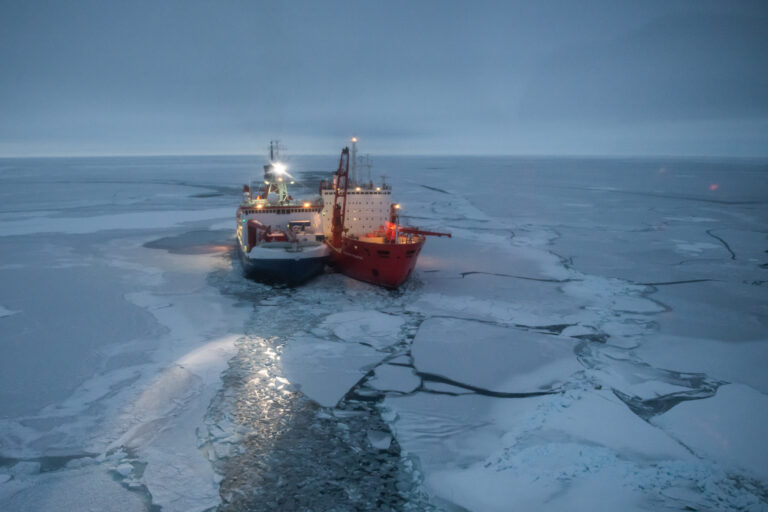An ambitious international project to study the climate of the Arctic from a research ship floating in polar ice for a year has reached an important milestone.
Researchers on board the RV Polarstern, which set sail from Tromso in Norway late last month, have selected the ice floe which will serve as their drifting base for the next 13 months.
Known as the Multidisciplinary Drifting Observatory for the Study of Arctic Climate (MOSAiC), the US$150m project is the largest shipborne polar expedition in history. Researchers hope that data gleaned from the expedition will mark a step-change in climate science.
The search for a suitable ice floe was completed ahead of schedule and before the six-month polar night settles in. Even so, the MOSAiC team said it was a major undertaking involving satellite imagery, two icebreakers, helicopter flights and scouting missions on the ice surface.
The job was made especially difficult because of the scarcity of sufficiently thick floes in the expedition’s start region following another warm polar summer. According to expedition leader Markus Rex the ice floe is in “an unusually stable area.”
“Other parts of the floe are typical of the new Arctic, which is home to thinner, less stable ice,” said Rex, from Germany’s Alfred Wegener Institute, Helmholtz Centre for Polar and Marine Research (AWI). “And precisely this combination makes it very well suited to our scientific projects.”
The first researchers from Polarstern set foot on the floe in late September. The floe was selected after satellite images identified a large bright region in its northern section, evidence of thicker, more stable ice.
The MOSAiC scientists plan to establish a research camp in this region where the ice is highly compressed and estimated to be several meters thick. From this camp more than 400 scientists from 17 countries – including many of the world’s top Arctic researchers – will study the physical, chemical and biological processes that drive the Arctic atmosphere and ecosystem.



